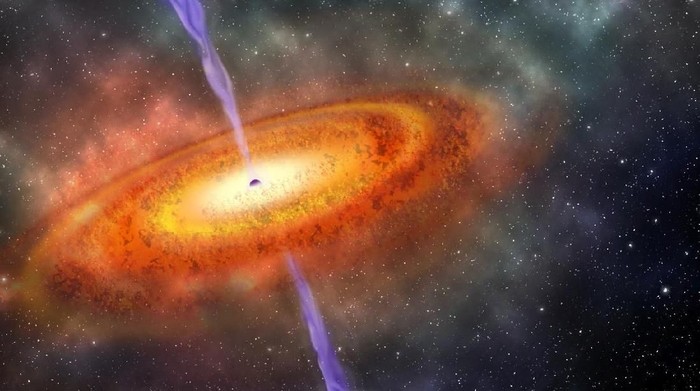United Kingdom – Astronomers have uncovered what is now believed to be the largest black hole ever detected in the universe, a cosmic giant with a mass estimated at 36 billion times that of the Sun. Nestled within the vast galaxy Messier 87, the discovery offers extraordinary insights into the violent growth of supermassive black holes and the evolution of galaxies themselves.
According to Professor Thomas Collett of the University of Portsmouth, the object is likely the result of two previously existing supermassive black holes merging into an ultra-massive entity. This process, scientists suggest, has allowed the black hole to consume stars and interstellar gas, driving its expansion while simultaneously releasing bursts of energy powerful enough to trigger the formation of new stars.
Dubbed the “Cosmic Horseshoe,” the black hole’s immense gravity bends light from more distant galaxies into nearly perfect arcs, an effect first predicted by Albert Einstein over a century ago. Gravitational lensing phenomena such as this have since become essential tools in studying dark matter and cosmic structure.
The findings, published in the Monthly Notices of the Royal Astronomical Society, indicate that this black hole is 10,000 times more massive than Sagittarius A*, the black hole at the center of the Milky Way. That places it among the ten most massive ever identified, and possibly the single largest.
“This is a snapshot of the late stages of galaxy and black hole formation,” Professor Collett explained. “We are witnessing the culmination of a cosmic process that began billions of years ago.”
Astrophysicist Ethan Siegel added further context, noting that black holes in the early universe appear to have been disproportionately large compared to their host galaxies. “In the universe’s infancy, the ratio of stellar mass to black hole mass was close to 100 to 1—or even 10 to 1. Today, that ratio is closer to 1,000 to 1. This strongly suggests that black holes, not stars, may have been the first major structures to emerge after the Big Bang,” Siegel said.
Messier 87 has long been a focal point for astronomers, not least because it hosted the first black hole ever imaged by the Event Horizon Telescope in 2019. Yet this new discovery pushes its reputation even further, revealing not just a supermassive black hole, but an ultra-massive behemoth reshaping our understanding of cosmic origins.
The detection underscores how little is still known about the earliest stages of the universe. For now, the largest black hole ever recorded stands as both a scientific triumph and a profound reminder of the mysteries that still govern the cosmos.






